Table of Contents
- What Is Entrepreneurship?
- What is the goal of entrepreneurship?
- Types of Entrepreneurs
- Characteristics of Successful Entrepreneurs
- Types of Entrepreneurship
- Small Business vs. Entrepreneurship
- Entrepreneurship Pros and Cons
- Steps to Entrepreneurship
- Entrepreneurship Examples
- Entrepreneurship Risks
- Best Sources of Funding for Entrepreneurs
- Entrepreneurship Books
- Entrepreneurship Quotes
- Taking the First Step to Become an Entrepreneur
Accordingly, an entrepreneur is a person who creates, organizes, and manages a business venture, taking on financial risks in the hope of profit. Entrepreneurship involves:
- Developing new products, services, or business models.
- Investing time and resources with uncertain outcomes.
- Managing and motivating teams.
- Addressing challenges in the market or society.
- Identifying and capitalizing on market gaps.
Entrepreneurs often start small businesses or startups but can also innovate within larger organizations.
Why are entrepreneurs important?
Entrepreneurs are the driving force behind economic growth, innovation, and social change. Here’s how:
- Job creation and economic growth. Entrepreneurs are the main creators of new jobs, which reduces unemployment rates. As new businesses grow, competitiveness, productivity, and economic output increase.
- Innovation. Entrepreneurs are always looking for new ways to solve problems or identify untapped opportunities. They bring fresh ideas, products, and services to the market, which disrupts industries, creates new markets, and improves existing ones.
- Community development. Entrepreneurs often support local initiatives and revitalize neighborhoods. Creating a sense of pride and identity attracts further investment and boosts the local economy.
- Social impact and change. Many entrepreneurs tackle social and environmental challenges through their businesses. It's a great way to fight poverty, inequality, and environmental degradation.
- Wealth creation and distribution. Entrepreneurship creates wealth for entrepreneurs, their employees, investors, and the economy as a whole. Tax revenue from entrepreneurial ventures can fund public services and infrastructure projects to increase living standards.
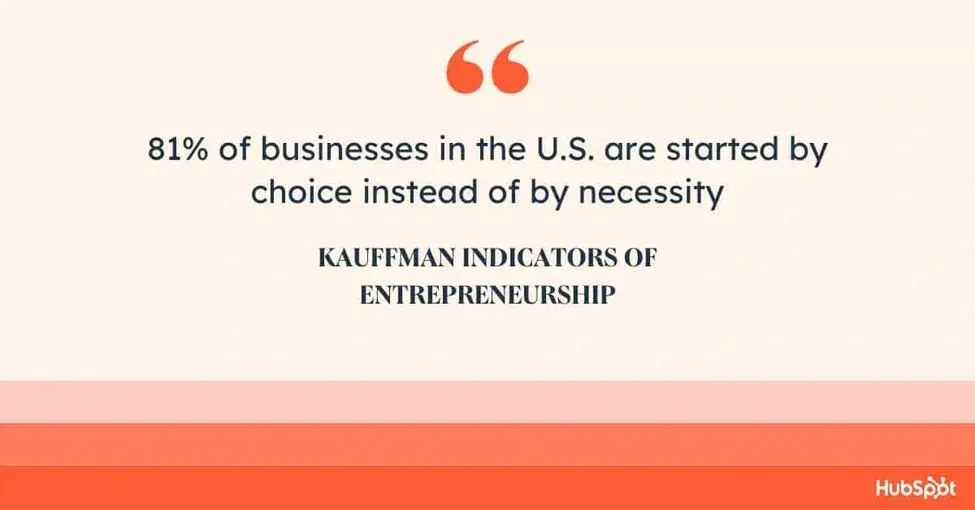
Our research found that the top four reasons entrepreneurs start businesses are to make a career or lifestyle change, be their own boss or escape 9-5s, and get more income. Further, 81% of businesses in the U.S. are started by choice instead of by necessity.
Before you embark on entrepreneurship, determine your goals. Is your aim to create career freedom, make a difference in your community, or build wealth for your family (or all the above)?
Knowing your motivations will help you make a plan toward your goals and keep you focused in difficult times.
Types of Entrepreneurs
As an entrepreneur myself, I can‘t stress enough how important it is to understand the different types of entrepreneurs. When I first started out, I didn’t realize there were so many paths one could take. Let me break it down for you based on my experiences and observations:
Social Entrepreneurs
Social entrepreneurs prioritize impact over profit. They tackle societal issues through innovative business models. For example, Blake Mycoskie of TOMS Shoes, who pioneered the “One for One” model, donates a pair of shoes for each pair sold.
<img src="https://knowledge.hubspot.com/hubfs/entrepreneurship-3-20240813-7315718.webp" style="margin-left: auto; margin-right: auto; display: block; width: 650px; height: auto; max-width: 100%;" title="" loading="lazy" alt="what‘s an entrepreneur, example of social entrepreneur. Homepage of the TOMS website featuring a banner with various TOMS shoes in different colors arranged in a circular pattern. The text " our="" story"="" is="" prominently="" displayed,="" along="" with="" the="" tagline="" "we’ve="" always="" been="" in="" business="" to="" improve="" lives."="" "="">
Serial Entrepreneurs
These are restless innovators who thrive on starting multiple businesses. They're masters of spotting opportunities and building companies from scratch.
Elon Musk is an example of a serial entrepreneur and was an early investor in PayPal, SpaceX, and Tesla.

Innovative Entrepreneurs
I‘ve always admired innovative entrepreneurs. In my own journey, I’ve tried to embody some of their characteristics. These are the disruptors who transform industries with groundbreaking ideas. They often create entirely new markets or revolutionize existing ones.
Steve Jobs, co-founder of Apple, redefined personal computing, mobile phones, and digital music distribution.
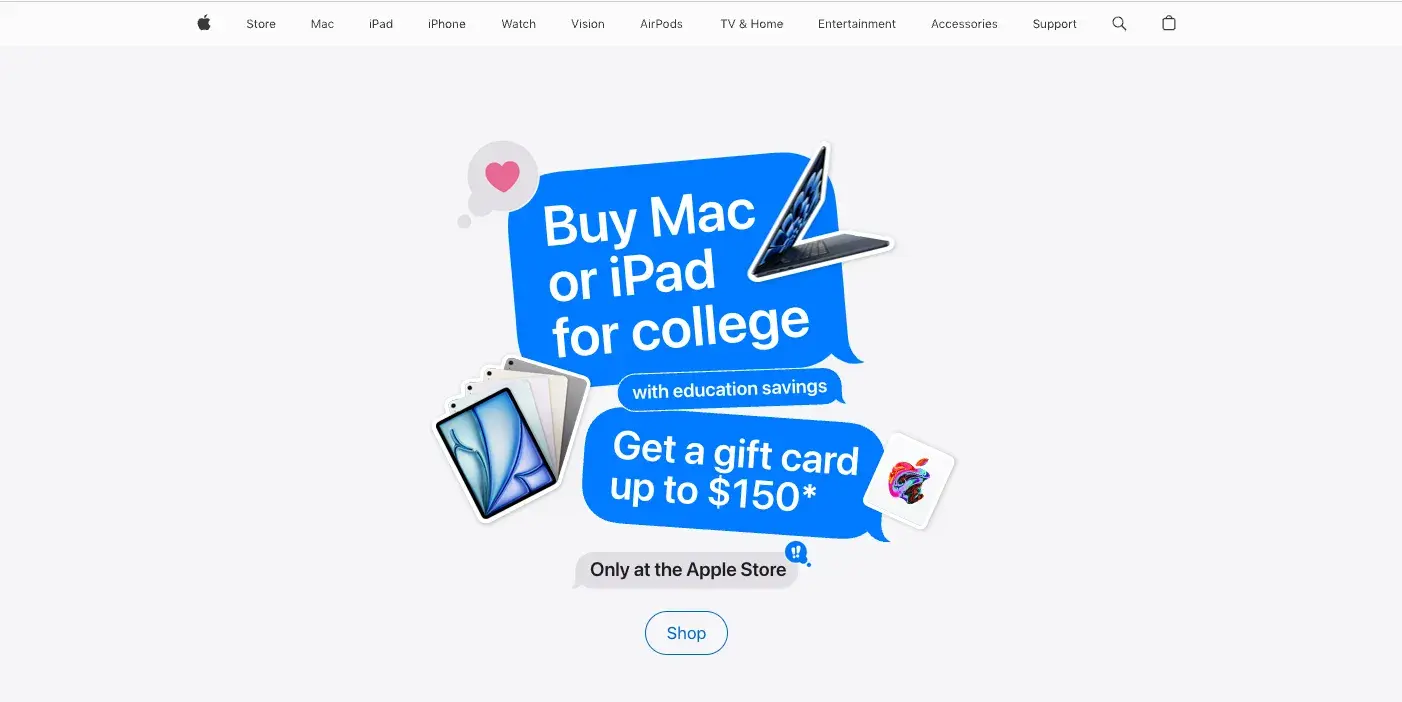
Similarly, Reed Hastings of Netflix upended the entertainment industry by pioneering video streaming and original content production.
Small Business Entrepreneurs
The backbone of local economies, these entrepreneurs build and operate businesses that serve their communities. Think of your local bakery owner or the proprietor of a family-run hardware store.
Hamdi Ulukaya, founder of Chobani yogurt, started as a small business entrepreneur before growing his company into a major brand.

Scalable Startup Entrepreneurs
These ambitious founders aim to build rapidly growing companies with global reach. They often seek venture capital and plan for eventual acquisition or IPO.
Mark Zuckerberg of Facebook (now Meta) is a prime example, having scaled his college project into a global tech giant. Brian Chesky, Joe Gebbia, and Nathan Blecharczyk of Airbnb also fall into this category.

Characteristics of Successful Entrepreneurs
We've all heard the textbook answers about what makes a successful entrepreneur: passion, communication, charisma … But what does success really look like in the trenches?
To get beyond the buzzwords, I looked through resources and reached out to a diverse group of entrepreneurs who've built thriving businesses. Their insights were surprising, refreshingly honest, and far more nuanced than the usual clichés.
Risk-Taking
Yes, risk-taking is a cliché. But like many clichés, it holds undeniable truth.
While it‘s easy to romanticize the idea of throwing caution to the wind, smart risk-taking involves a calculated approach. It’s about assessing potential rewards against potential losses and making informed decisions based on that analysis.
Amir Salihefendic, CEO of Doist, highlights the importance of seizing opportunities early on.
"When younger with fewer responsibilities, take risks that allow you to grow as a person, like moving to a new country, starting a new business, or trying a new profession,” Salihefendic says.
Salihefendic‘s advice underscores the idea that risk-taking is not just about financial gain — it’s about personal and professional development. By stepping outside our comfort zones, we open ourselves up to new experiences, new perspectives, and ultimately, new possibilities.
Create a healthy appetite for risk by seeing failure as a learning opportunity. Every misstep provides valuable insights that can inform future decisions.
Also, creating a safety net can mitigate potential losses. This might include having savings set aside or a backup plan in case things don't go as expected.
Lastly, do your research. Research the market, assess your resources, and seek advice from trusted mentors.
Ability to Cede Control
Entrepreneurs often have a reputation for being fiercely independent and hands-on. But the ability to cede control is crucial for long-term growth.
Ceding control means more than just delegating tasks — it involves relinquishing ownership and decision-making power in specific areas of your business. This might sound counterintuitive, but as your company expands, it becomes impossible to micromanage every aspect.
Max Friar, founder of Calder Capital, hits the nail on the head with this:
“I use the word ‘cede’ because it is stronger than ‘delegate.’ Many owners of small businesses delegate some responsibilities; however, they still retain tight oversight and control. To grow continuously, an entrepreneur must recognize where they are weakest and literally cede parts of the business to other leaders.”
Here are some ways I think you can build the muscle of ceding control:
- Surround yourself with a team you trust implicitly. Look for individuals who are competent and share your values and vision for the company.
- Clearly define the roles and responsibilities of each team member, along with measurable goals. This provides a framework for accountability and ensures everyone is working towards the same objectives.
- Give your team members the autonomy to make decisions and take ownership of their areas of responsibility. Encourage them to share their ideas and take calculated risks.
- Be available to offer guidance and support when needed, but avoid micromanaging. Trust your team to do their jobs and learn from their mistakes.
Learning to cede control was one of the toughest lessons for me to learn. When my company grew from just me to a team of five, I found myself trying to micromanage every aspect of the business.
It wasn't until I nearly burned out that I realized I needed to trust my team. Ceding control over graphic design to our new hire was my first step, and seeing her creative designs be much better than my own was a humbling but necessary experience.
Future-Thinking
Prior experience — whether from your day job or past startup ventures — can help you succeed as an entrepreneur. Many startup ideas come from experience gained in previous employment. Additionally, industry knowledge and connections can take you far.
When starting a business related to your current work, you also need to check carefully to make sure you don’t violate a non-compete agreement or your employer’s intellectual property.
While industry experience is very helpful, technical knowledge isn’t enough to make someone a successful entrepreneur. As shared in Michael Gerber’s book “The E-Myth,” an excellent barista may fail at opening a coffee shop because he or she has no experience hiring employees or marketing a business.
Successful entrepreneurs need to have a broader perspective to create systems to help their businesses scale and operate without them one day.
Flexibility
The ability to pivot, adapt, and find creative solutions to unexpected challenges is what separates thriving businesses from those that crumble under pressure.
Flexibility means being open to change, embracing the unknown, and adjusting your strategies when circumstances demand it. It's about having a Plan B (and maybe even C and D) ready to go when Plan A inevitably hits a snag.
I had to become flexible when AI tools hit the market. As a writer, it was easy to think these tools were going to replace me — everybody else was saying the same thing. But instead, I learned how to integrate AI into my workflow and improve my writing so the tech couldn’t do what I did.
Michael Nova, CEO of Nova Custom Label Printing, also supports this and shares a real-life example of flexibility in action.
“Once in a while, we receive bad news from our vendors and have to break the news to our clients that materials will not arrive as expected or that they shipped the wrong material to us. We were able to find another vendor to deliver the correct materials without delay so that there would not be any delay in the completion of the job,” Nova says.
Michael’s flexible mindset turned a potential disaster into a solution.
The key? Focus on finding solutions rather than dwelling on the problem. Brainstorm multiple options and be willing to try new approaches.
Mindfulness techniques can also help you stay calm and focused in the face of stress. Use apps like Calm to practice this.
Resilience
While flexibility involves adapting to change, resilience is about bouncing back from setbacks. It's the ability to withstand adversity, maintain focus on your goals, and emerge stronger from challenges.
Businesses face a constant barrage of obstacles, from market fluctuations and economic downturns to unexpected setbacks and failures. Without resilience, entrepreneurs can easily become discouraged and lose their way.
Chris Sorensen, CEO of PhoneBurner, emphasizes the importance of resilience in his entrepreneurial journey. He sahes a specific example from his early days developing Michelangelo, a complex CRM querying software he helped to create.
“The market was skeptical about its need, and initial feedback wasn’t promising. Instead of stepping back, we doubled down on enhancing the product’s capabilities, focusing on integrating real user feedback into iterative design improvements,” Sorensen says.
Setbacks are inevitable, so it’s important to be prepared to learn from them.
Decisive
Guy Kawasaki said it well, “Ideas are easy. Implementation is hard.”
By executing and being first to the market, you can seize the "first-mover advantage." So, if you're the first to market a good idea, your competition will have to play catch up. Early brand recognition works in your favor and makes it harder for others to replicate your success.
The classic example is Amazon. By the time their success prompted competitors to start their own online bookstores, Amazon had already taken a big enough market share to make competition nearly impossible. Their execution (not just their idea) is what changed the way the world shops.
Successful entrepreneurs aren’t perfect — far from it. Instead, I’ve noticed they develop the discipline to make decisions despite uncertainty, learn from feedback, and iterate to improve.
Willingness to Work Hard
Entrepreneurship demands an incredible work ethic, especially in the beginning. I remember dedicating entire days, including weekends, to my business.
Anne McGinty, a seasoned entrepreneur with four businesses under her belt, can attest.
Reflecting on her experience with San Francisco Holiday Lighting, Inc., McGinty recalls, "The first season, my now husband and I worked 16-18 hour days, seven days a week, because we knew that the ‘peak season’ wouldn't roll around again until the following year, so it behooved us to work as hard as we could for a limited time.”
McGinty notes that by the time the couple sold the business, the installation season had grown to be about a six-month season, “even if lights were only turned on for the last six weeks of the year.”
The early days of a business are often the most critical. You want to hustle and put in the hard work to build momentum and establish a strong foundation.
Grit
Author Angela Duckworth describes grit as “passion and perseverance for long-term goals” and has studied how it helps people succeed in competitive environments.
As I already mentioned, the best entrepreneurs are goal-focused. You need to examine your motivations and set goals. More importantly, plot a path to reach them. Learn from your mistakes, avoid distractions, and continue through challenges.
Types of Entrepreneurship
As you begin your entrepreneurship journey, it’s important to consider what kind of business you’d like to create. We’ll look at the main four types below.
Independent Businesses
Independent businesses are typically small businesses owned by an individual, a family, or several business partners. Independent businesses rely on self-funding, their own revenue, or traditional business loans to cover business costs.
Most independent businesses provide a product or service in an established sector, such as retail, restaurants, or personal services.
Funded Businesses
Funded businesses, also known as scalable startups, are businesses designed for rapid growth, with investments from venture capital or private equity firms to help them get there.
Funded businesses may fill a gap in the market or seek to improve a product or service to bring it to larger markets. Common examples include Software-as-a-Service (SaaS) or biotechnology companies.
Franchise Businesses
Franchise businesses take an existing business brand model and license or “franchise” the right to operate that business within a certain territory.
Franchise business owners or “franchisees” pay fees to license the brand and franchise resources but still operate the business, hire employees, and keep the profits.
Popular examples of franchises are restaurants like McDonald’s and Subway, but franchises can also be in industries like home services, fitness, or education.
Social Entrepreneurship
While traditional business seeks to maximize profit for the owners, social entrepreneurship is a type of business structure that seeks value for all shareholders (employees, customers, suppliers, and the community). Another term for this is a benefit corporation, or B Corp.
Social entrepreneurs, or socialpreneurs, work to develop, fund, and implement solutions to a wide range of community issues related to social, cultural, and environmental challenges. They work to foster positive change in society through their initiatives and innovations.
Small businesses and entrepreneurial ventures share many similarities. Both create jobs, deliver value for their audiences, and are led by a motivated individual or group of individuals.
Entrepreneurship Pros and Cons
In my experience, owning a business is very different from having a job. You have full responsibility for the business, but you also reap the rewards of its success. Here are a few of the advantages and disadvantages of being your own boss.
Pros of Entrepreneurship
You control your own destiny.
This is my favorite aspect of entrepreneurship: Entrepreneurs have the benefit of being their own boss. You’ll have the opportunity to set your own schedule. If you’re a night owl or prefer working on weekends, you can make those choices without consultation.
Plus, if your business takes off, you’ll have unlimited earning potential. You can set your own salary and decide how much of your revenue you’ll invest back into the business.
You can decide who’s on your team.
As the leader of a business, you’ll have an intimate role in building out your team. You get to decide which skill sets to look for, how to write the job descriptions, and who gets the job.
You can take pride in what you build.
As an entrepreneur, your idea can change the world for the better. You may fill a market gap that makes customers’ lives better. Or perhaps your business has a positive effect on the environment, a social issue, or your local community.
Like me, you’ll have the satisfaction that you created something from the ground up — a huge accomplishment for any leader.
Cons of Entrepreneurship
Expect hard work and long hours.
While you get to set your schedule, every entrepreneur should expect long hours at the start of their journey. I know from experience that you’ll wear many hats until you can hire a team.
As the boss, you’ll always be on call. If challenges arise, you’ll have to make quick decisions.
You’ll have to cover up-front costs.
Starting your business requires capital. You’ll have to pay for your website, supplies, physical space, and employee salaries. You’ll be the one talking to investors to secure the money for these up-front costs.
Many entrepreneurs cover these costs from their savings as well. Be ready to pull from your bank account if you’re in a bind. You’ll also be responsible for paying off loans, paying yourself (if you can), and keeping investors happy.
You’ll need to navigate finances, compliance, and human resource functions.
In a larger company, you’ll have separate departments to help manage budgets, ensure compliance, and oversee HR responsibilities. As an entrepreneur, this all falls to you.
You may not have all of the expertise you’ll need. Get ready to pay for a lawyer and other consultants for advice.
Steps to Entrepreneurship
Though it’s a common undertaking, no two paths are alike, and the process can be overwhelming. Unless you have an entrepreneurship degree, chances are you have little idea how to become an entrepreneur.
One path to entrepreneurship is to purchase an existing business or a franchise, often through a broker. In this case, you will have a partial head start or blueprint for your business, though you will have to go through some of the same steps to register your business and make it your own.
If you’re starting a new business, I suggest following these steps to get started.
1. Choose a business idea.
Some entrepreneurs choose to start a business with an idea already in place. For the rest, choosing a business idea can be a challenge.
There’s a huge range from brick-and-mortar establishments to home-based services businesses, business-to-business (B2B), or business-to-consumer (B2C). Small business ideas can be divided between offering a product or service. An entrepreneur who sells products offers tangible objects of various quantities to customers. Ones offering services sell their skills and time to customers continually — like subscriptions.
To find the best fit, I recommend you ask yourself these questions:
- What interests you? Do you have technical expertise, connections, or experience in a certain industry?
- What problem do you see that you think you can solve?
- Are you more interested in selling a product or a service?
- What competition is out there? Choosing a business in an oversaturated or highly competitive market will make it difficult to penetrate.
- What is likely to turn a profit? Look at examples of similar businesses and research profit margins.
- What is affordable? Opening a restaurant is appealing to many people, but the startup costs are higher than many other business types.
Business ideas are endless but should be chosen carefully as some markets could be oversaturated with the same offering, or too similar to other previously established businesses. Research your competitors and make the most out of your entrepreneurial journey.
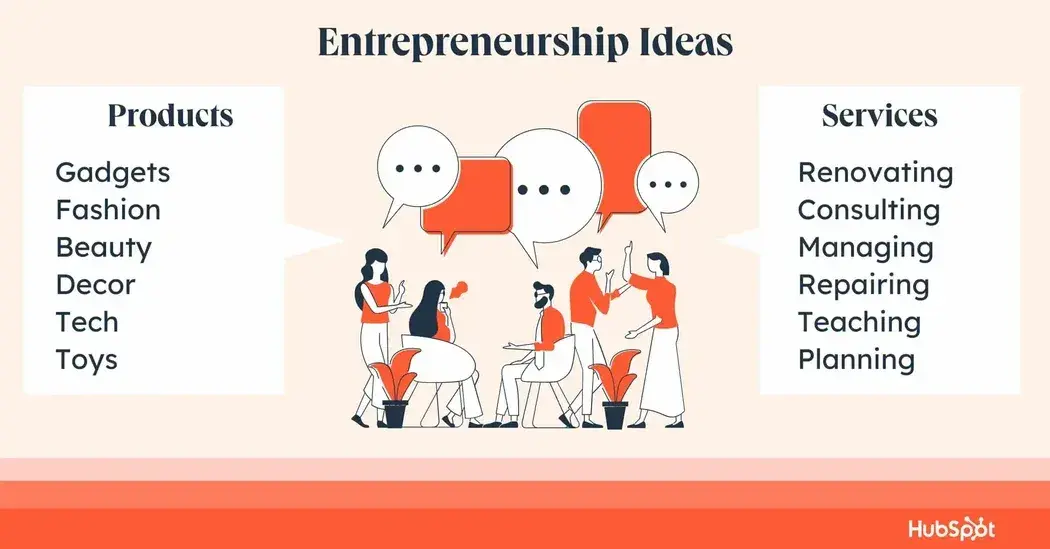
It’s alright if you’re not passionate about an idea as well. In fact, our research reveals that only a quarter of entrepreneurs followed a business idea they were passionate about. What matters is that you’re willing to put in the work.
2. Determine the legal structure of your business.
From a legal perspective, what structure will your business be? This may change as you grow, and state laws vary.
Let's take a look at the four major types of legal structures you might choose to implement when starting your business:
- Sole proprietorship. In a sole proprietorship, you are the business as far as laws and taxes are concerned. You're personally liable for debts and losses. However, you can set up a business (DBA) name and a federal tax ID number to make your business more professional.
- Partnership. A partnership is a single business where at least two people share ownership. Each owner contributes to all aspects of the business as well as shares in its profits and losses.
- LLC. With a limited liability company, you are not personally responsible for any financial or legal faults of the business. Although an LLC is more costly and complex to set up in comparison to some other legal structures, it comes with several tax advantages and protects the owner(s).
- Corporation. A corporation is a legal entity separate from its owners and has most of the rights and responsibilities that an individual possesses (to enter into contracts, loan and borrow money, sue and be sued, hire employees, own assets, and pay taxes).
3. Choose and register your business name.
First, select and register your business name. While this can be fun and creative, it's also a paperwork-heavy legal process with implications for your business down the road.
If you‘re starting an LLC, your name will be registered automatically when you register your business with the state. Otherwise, you’ll need to go through a separate registration process.
Start with a trademark search and then see if your domain name is available. (Tip: You can trademark your name and logo for around $300 in the U.S.)
4. Secure licenses, permits, and more.
Make sure you have all of the right permits and licenses to ensure your business is operating legally.
If you have a restaurant, for example, you’ll need things like a food service or liquor license. If you sell “tangible property” (i.e., physical items), you’ll need a seller’s permit to collect sales tax from customers.
The IRS can point you to the right office in your state. SBA.gov has tools to help you find out what kind of licenses you'll need to operate your business.
5. Establish your mission and vision.
What does your business do? What do you stand for? How do you plan to make the world better? These are questions your mission and vision statements should answer.
Your mission and vision should shape your culture and guide every decision you make, from operations to recruitment to marketing. Brands with a strong identity have an easier time producing authentic content true to their values and that resonates with their audiences.
Mission Statement vs. Vision Statement
A mission statement explains the purpose of your organization and how your business serves customers. It typically includes a general description of your organization and its function and objectives.
Your mission statement should clarify the “what,” “who,” and “why” behind your business.
A vision statement describes the ideal state of the community or world as a result of their contribution.
Learn how to define inspiring vision and mission statements for your business with a free template.
6. Write your business plan.
A business plan is a crucial document to outline what problem you will solve for people, how you will earn a profit, and how you will operate your business. This is a blueprint for success and one you need before asking for funding or a loan for your business.
Need help creating your business plan? Check out our Business Plan Templates to outline your business strategy and financial projections.
7. Write your marketing plan.
One part of your business plan is creating a marketing plan. Once you launch a business, it's time to start building an online presence and getting the word out about your brand.
Our research shows the top five marketing channels preferred by entrepreneurs are:

To get started, ask yourself the following questions:
- Who wants or needs what I'm selling?
- Where do they look for information?
- Who might become a promoter of the product I'm selling?
One helpful practice I’ve found is to create a buyer persona — an in-depth, semi-fictional profile designed to help you better understand the needs of your target customers.
Dig into who your buyer personas are and what messaging would likely resonate best with them. Consider their backgrounds, interests, goals, and challenges as well as their demographics, what they do, and so on.
Document where you plan to reach your customers and a rough budget.

Start outlining your company's marketing strategy.
Use HubSpot's Starter Bundle for small businesses to streamline your marketing. It'll help you reach and engage your target audience with tools like email marketing and form builders.
8. Hire employees.
Unless you can operate your business solo at the start, you need to make your first hire so you can open your doors. Depending on your business, this could be a customer-facing role or could be a specialized role to fill a technical need.
Work with an accountant or human resources firm to set up your payroll and make sure you’re meeting legal requirements as an employer. Research salaries in your area and write up a job description for what you need. Then, post your job on job sites or circulate it to nearby schools.
Look for someone flexible and versatile who aligns with your mission and vision. They’ll likely need to wear lots of hats!
Now that we’ve seen what it takes to become a successful entrepreneur, let’s look at some business ideas.
Entrepreneurship Examples
1. Krio Skincare

This Boston business was started by Tony Johnson, an entrepreneur with a passion for hair and skincare. Krio Skincare sells products for melanated skin made with natural ingredients. The brand also offers hair and lip products.
2. Mindful Training Solutions

Dr. Donald E. Grant Jr. began his consulting business by offering diversity, inclusion, and justice solutions for large businesses. This CEO took his experience from teaching psychology and turned it into a way to transform business operations for the better.
3. Otter Public Relations
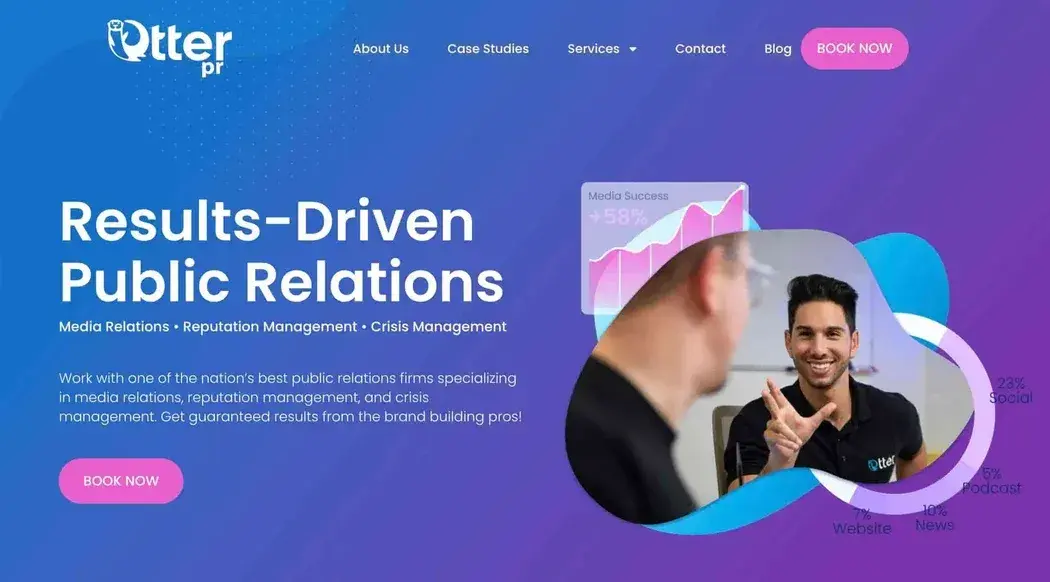
Scott Bartnick and Jey Feldman joined forces to create a public relations agency to help businesses strengthen their brand reputation. Through a mix of traditional and digital marketing strategies, this agency helps clients increase profitability and credibility.
4. Girls That Invest
Girls That Invest by Simran Kaur is a global platform dedicated to empowering women when investing.

Through their top-rated podcast, educational courses, best-selling book, and online community, they provide accessible resources and support to help women build financial independence and generational wealth. Their mission is to break down barriers, simplify complex financial concepts, and create a welcoming space for women to learn about and grow their investments.
5. Cut the Fluff
Cut the Fluff by Erica Schneider is a weekly newsletter and specialized writing and editing service tailored for professionals in the B2B sector.

It offers coaching and consulting to help solopreneurs, founders, and executives improve their communication skills and create more impactful content. Schneider has over 10 years of experience in B2B marketing, content writing, and editing. She has also taught hundreds of entrepreneurs and founders how to communicate online.
6. Maqsad
Taha Ahmed and Rooshan Aziz started Maqsad, a Pakistani edtech startup that provides a mobile-based learning platform for students.

The platform offers a variety of features, including video lectures, practice tests, and personalized feedback, to help students prepare for university entrance exams. Maqsad has been downloaded over a million times and aims to make education accessible for millions of Pakistani students.
7. Leaps
Leaps by Rennie Ijidola and Victor Ijidola is an async subject matter expert (SME) interview platform that helps companies extract insights from SMEs on any topic. You can collect critical insights from several SMEs at once, managing and tracking all SME collaborations in one central platform.

Examples as inspiring as these are motivating. However, as with all entrepreneurial endeavors, no venture is free from risks. Let’s discuss the different types of risks business owners face.
Entrepreneurship Risks
How much risk you take depends on you, your business, and specific circumstances. For example, buying a domain name doesn't require the same level of commitment as building a prototype.
What matters most is that you grow from your setbacks and maintain a willingness to try new things.
Speaking of risk and failure in entrepreneurship, let's look at some commonly made mistakes and risks for entrepreneurs.
- Demand risk: Are consumers interested in your product or service offering? Demand risk is the prospective customers' willingness to purchase or adopt the offering.
- Technology risk: An entrepreneur assumes technology risk when engineering a product or when scientific research and development are necessary to create the product.
For example, if you plan to create a groundbreaking cure for a disease, you‘d assume the risk if the scientific development wasn’t successful.
- Execution risk: To be a successful entrepreneur, you also need to be a strong leader. Execution risk is used to describe the entrepreneur's ability to build a strong team of employees and partners to carry out plans.
- Financial risk: Every entrepreneur assumes financial risk and oftentimes uses personal funds to grow their business. They must operate under the assumption that they'll be able to access external capital from other funding sources (e.g., investors, venture capitalists, crowdfunding).
Best Sources of Funding for Entrepreneurs
Starting a business can be expensive. The average small business owner needs around $40,000 in startup capital for their first year, and our entrepreneurship survey shows that 22% of entrepreneurs have trouble accessing funding.
Fortunately, there are plenty of funding options available for entrepreneurial ventures. If you have valuable ideas and can communicate your vision, you can get startup funding with a little elbow grease. Focus on determining which funding strategy best suits your needs and think about how you can offer value to potential backers.
Side note: Use our Business Startup Kit for access to a startup cost calculator and a feasibility study template to get an idea of how much funding you need.
Bootstrapping
Bootstrapping, or self-funding, has many advantages. It doesn't incur interest and allows you to maintain control over your business and its equity (to name a few).
By self-funding, you don't take any outside funds to grow your business. Bootstrapped businesses keep costs low and scale at a sustainable pace.
We all know the stories of multi-billion dollar companies like Apple that started in a garage or a basement. According to Fundera, 50% of new businesses do the same.
The internet is your friend: Domain names are cheap. Social media offers free marketing. Online retail has a fraction of the overhead of a brick-and-mortar location.
Bootstrapping taught me invaluable lessons in resourcefulness. I transformed my garage into a makeshift office, bartered services with other startups to keep costs low, and learned every aspect of the business myself before hiring help.
It was challenging, but it gave me complete control over my company‘s direction and forced me to be creative in problem-solving. Looking back, I wouldn’t have done it any other way.
Small Business Loans and Venture Capital
Traditional small business loans and venture capital funding offer big money … but sometimes with big strings attached.
Small business loans, like from a bank or the SBA, provide an established source of financing that favors more traditional business models. If you go this route, expect to present a meticulous and clear business plan and account for every penny of it.
Venture capital is on the opposite end of the spectrum. VC backers look to put serious cash behind ideas that promise quick and massive growth. Very few have what they're looking for. The ones that do can expect to trade some of their control of the business and a share of its profits in exchange for VC backing.
It's essential to find a backer who shares your vision. With that said, there are some less obvious benefits of equity financing. The process of honing your pitch will reveal areas for improvement in your business model that you might not have otherwise discovered.
Funding is also validating. It means someone is willing to put a dollar amount on how much they believe in what you‘re doing. And an influx of cash when you’re starting out makes all the difference when you need to quickly solidify your first-mover advantage.
Silent Partner
Another option is to work with a silent partner. Similar to a VC backer, this is someone who puts significant funds into your project and expects significant returns. But unlike a VC, a silent partner doesn't want any part in your business decisions.
Because silent partners don‘t have a say in your business, they’re considered investors by the SEC.
Crowdfunding
Crowdfunding sites like Kickstarter and Indiegogo are new sources of funding that have many upsides for entrepreneurs. Crowdfunding provides money without taking equity or autonomy.
These platforms allow you to go straight to your fans and potential users. This promotes future growth and raises capital at the same time.

I like crowdfunding sites because they also serve as marketing platforms. Your content, branding, and mission statement will attract people to your campaign and offerings.
Since you're not giving crowdfunding backers an equity stake or seats on the board, you have to give them something. Campaigns on these platforms tend to offer backers prizes in exchange for their contribution: This can be early access to your product, tickets to a live event, etc.
Here you have another learning opportunity. Designing a crowdfunding campaign forces you to consider the value you're offering your customers.
They say that the best marketing technique is to design an outstanding product. If what you are offering is really of value, your backers will let you know by paying you for it.
Friends and Family
Mom and dad might not have as much money as a venture capital firm or a big bank, but they tend to have much better terms. Family and friends can be a great source of seed money, particularly when you're young and inexperienced.
They‘re more likely to invest in your potential and your work ethic than a backer who might want to see proof of concept you’ve yet to produce.
Special Programs
There are entire industries out there — from co-working spaces to CRM software to government grants — dedicated to helping entrepreneurs succeed.
The recent boom in entrepreneurship has sparked competition between governments at local, state, and national levels to attract and foster business development. Business incubators provide essential infrastructure and tools that might otherwise be out of reach for small businesses.
Seed accelerators are highly competitive programs that put startups in head-to-head competition for seed funding. Winners often receive mentorship and educational resources along with financing.
And here at HubSpot, we have a few special programs of our own:
- HubSpot for Startups offers software, education, and support for new and growing businesses.
- HubSpot Academy provides free education in sales, design, marketing, and more.
Entrepreneurship Books
Looking for books to inspire and guide your entrepreneurial efforts? In my experience, these are some of the most popular reads:
1. “Tools of Titans” by Tim Ferriss

From the #1 business podcast on iTunes, learn the tools, tactics, and morning routines of 200 of the world's top performers. I like this book because it covers topics ranging from tech to powerlifting to special operations and the music industry.
2. “Influence” by Robert Cialdini

Based on 35 years of research, “Influence” breaks down the psychology of persuasion into six key principles. I think this is a must-read for anyone interested in hearing the word “yes” more often.
3. “The Lean Startup" by Eric Ries
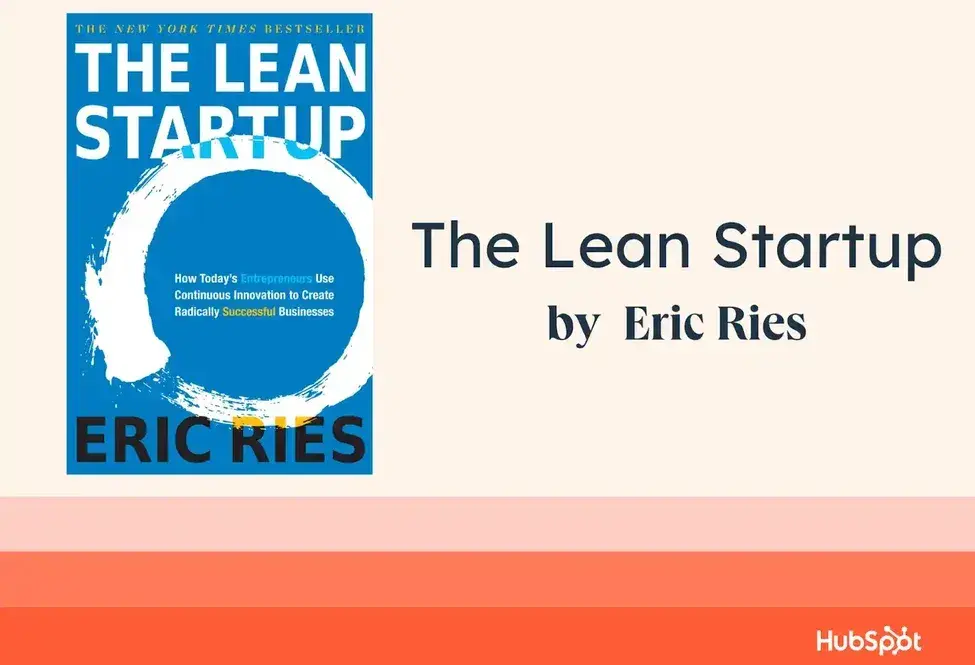
This book offers a blueprint for the modern startup and a survival manual for a business environment where failure is common. Learn how to innovate rapidly, put ideas to the test, and operate in the “extreme uncertainty” that is the startup ecosystem.
4. “Idea to Execution” by Ari Meisel and Nick Sonnenberg
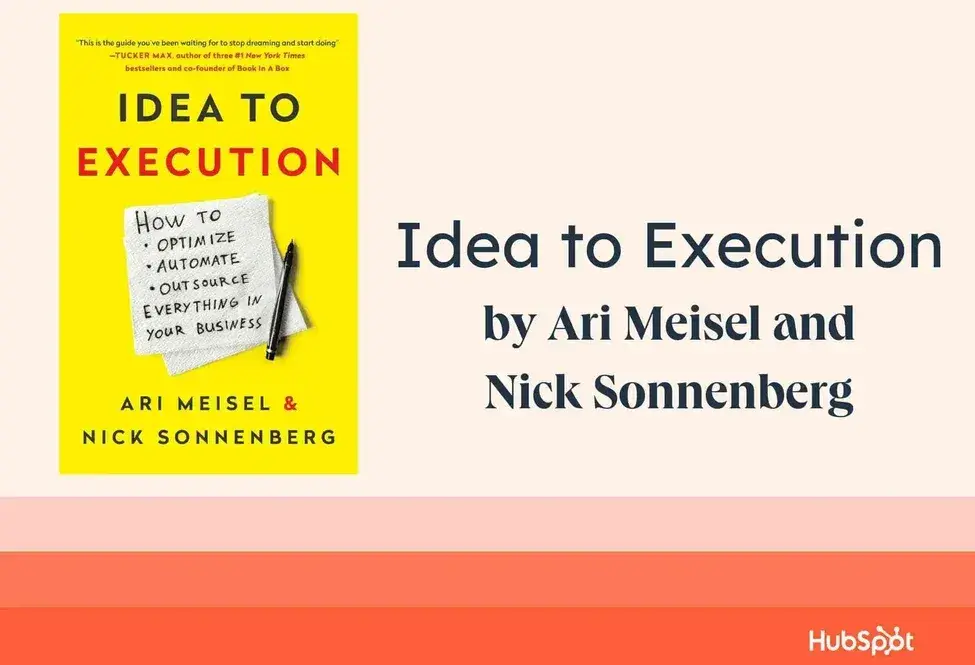
Find out how to optimize, automate, and outsource everything in your business. Meisel and Sonnenberg use the process outlined in this book to take a business from an idea on a cocktail napkin to a 24-hour launch.
5. “Pivot” by Jenny Blake

Pivoting is the act of taking your existing strengths in a new direction. It‘s about maximizing the opportunity presented by the question, "What’s next?" Blake explores the value of pivoting in business and your career.
6. “Built to Last: Successful Habits of Visionary Companies” by Jim Collins

Get case studies of businesses that have stood the test of time. “Built to Last” breaks down the structural secrets to organizational longevity. This is an inspiration for anyone hoping to leave a legacy in business, in my opinion.
7. “Smarter, Faster, Cheaper” by David Siteman Garland

This book offers a guide to marketing for entrepreneurs in the digital age. Garland includes practical advice on how to make the most of online marketing tools and platforms.
Taking the First Step to Become an Entrepreneur
I know firsthand that entrepreneurship is a learning process and a journey of discovery. You don't need to know everything to take the first small step, and when starting your own business, the best way to learn is by doing.
You have the tools and information you need to start — all that's left to do is to get to work.
Entrepreneurship


.webp)

![What I’ve Learned About Selling Online Courses (and How You Can Too) [+ Expert Insight]](https://53.fs1.hubspotusercontent-na1.net/hubfs/53/sell-webinar%20(1).jpg)

![How to Write a Business Proposal [Examples + Template]](https://53.fs1.hubspotusercontent-na1.net/hubfs/53/how-to-write-business-proposal%20(1).webp)

.jpg)


.jpg)
